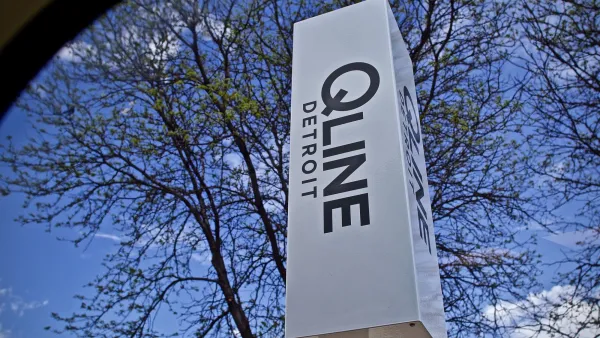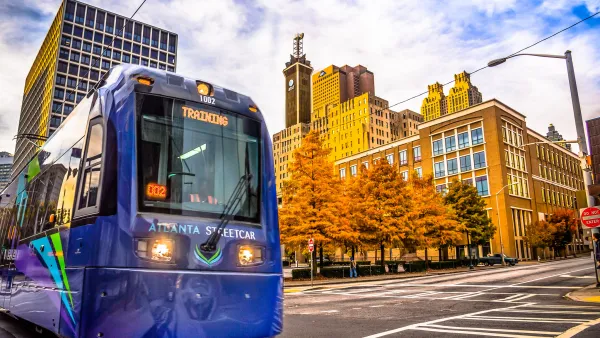Jim Epstein suggests that Detroit's new light rail line is America's largest boondoggle; Matthew Yglesias argues that that ignominy belongs to Washington D.C.'s planned streetcar.
Jim Epstein begins his article arguing against Detroit's forthcoming M-1 light rail line by faulting a romantic notion of urban settings: "downtown’s allure is an ongoing distraction from what’s actually important for the health of cities. It explains in part the twisted logic behind one of the most confounding urban development projects of our time, a $137 million 3.3-mile light rail line that breaks ground in Detroit next week."
Epstein's question: "How else could sane people think a bankrupt city should build a wildly expensive rail line on a partially deserted avenue in a neighborhood awash in cheap parking?"
More specifically: "How will the light rail line serve the 26 percent of Detroit households that don’t own cars and depend on the city’s dreadful bus service? Detroit has a 139-square mile footprint, but the light rail line will serve only those travelers who happen to be going from one spot to another along one three-mile stretch on Woodward."
Matthew Yglesias references the "many good points" of Epstein's article, but begs to differ on the ignominious title of biggest boondoggle: "The current fad for streetcar construction is actually bequeathing quite a large number of terrible projects to the country. And the very worst of these — like Washington, DC's maybe-opening-soon streetcar line — aren't just expensive, they actually make mass transit worse."
"The original sin of every bad streetcar program," according to Yglesias: "it doesn't have a dedicated lane." The article provides more evidence to back up the argument that streetcar projects like Washington D.C.'s work against the goals of transit.
FULL STORY: Is Detroit's New Light Rail Line America's Greatest Boondoggle?

Analysis: Cybertruck Fatality Rate Far Exceeds That of Ford Pinto
The Tesla Cybertruck was recalled seven times last year.

National Parks Layoffs Will Cause Communities to Lose Billions
Thousands of essential park workers were laid off this week, just before the busy spring break season.

Retro-silient?: America’s First “Eco-burb,” The Woodlands Turns 50
A master-planned community north of Houston offers lessons on green infrastructure and resilient design, but falls short of its founder’s lofty affordability and walkability goals.

Test News Post 1
This is a summary

Analysis: Cybertruck Fatality Rate Far Exceeds That of Ford Pinto
The Tesla Cybertruck was recalled seven times last year.

Test News Headline 46
Test for the image on the front page.
Urban Design for Planners 1: Software Tools
This six-course series explores essential urban design concepts using open source software and equips planners with the tools they need to participate fully in the urban design process.
Planning for Universal Design
Learn the tools for implementing Universal Design in planning regulations.
EMC Planning Group, Inc.
Planetizen
Planetizen
Mpact (formerly Rail~Volution)
Great Falls Development Authority, Inc.
HUDs Office of Policy Development and Research
NYU Wagner Graduate School of Public Service



























